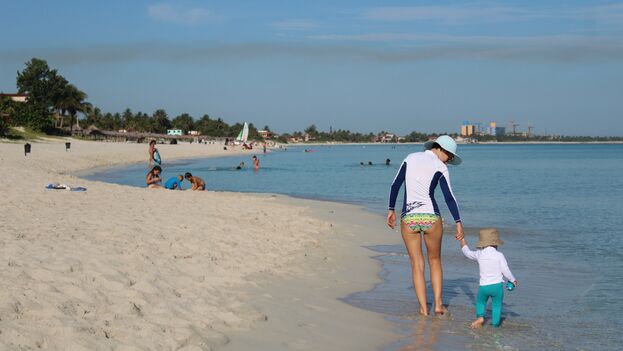
![]() 14ymedio, Madrid, 28 October 2022 — The Cuban Government has surrendered to the evidence and now reduces the tourism forecast to no more and no less than 790,000 more travelers this year. At the beginning of the year, the authorities had projected the arrival of 2.5 million foreign visitors, and, until a few days ago, systematically refused to review the figure. But this Wednesday, during the meeting of the Council of Ministers, Alejandro Gil Fernández finally announced that he expects 2022 to close with 1,710,000 travelers.
14ymedio, Madrid, 28 October 2022 — The Cuban Government has surrendered to the evidence and now reduces the tourism forecast to no more and no less than 790,000 more travelers this year. At the beginning of the year, the authorities had projected the arrival of 2.5 million foreign visitors, and, until a few days ago, systematically refused to review the figure. But this Wednesday, during the meeting of the Council of Ministers, Alejandro Gil Fernández finally announced that he expects 2022 to close with 1,710,000 travelers.
The news was leaked this Thursday in an article published in the official press that gives a detailed account of the Government meeting the day before. Focused on the “countering of illegalities,” the information hides in a brief paragraph the acceptance of the shipwreck of the country’s main source of foreign exchange — apart from the sale of medical services and remittances — and the one on which the authorities concentrate most of their investments and strategies.
“It’s less than the 2.5 million that we projected in the Economy Plan,” said the deputy prime minister and head of the economy, words that fell short of defining the disaster, especially if compared to the data from the years before the pandemic, with the record 4.7 million international visitors in 2018, and the prospect of reaching 5 million soon.
A little more than a week ago, when the tourism data for the first nine months of the year came out, it was obvious that it would be impossible to achieve the goal. According to the calculations, if 1,074,814 international travelers arrived on the Island through September, between October and December there had to be 1.4 million to reach the forecast, not even taking into account that the high season begins in November. It would have been necessary to triple each of the three months with the best data of the year, the 152,480 travelers in July.
When in February of this year Russia invaded Ukraine and the European Union began to apply sanctions that Moscow didn’t think it would dare to, including closing its airspace to flights from that country, Revolution Square could have begun to discount travelers from its projections. The Russian market, although not the main one in Cuba, was one of the fastest growing.
In 2017, the number of Russian tourists to Cuba registered an enormous increase, 40% compared to 2018, and in 2019, the increase was 30% compared to 2018. The braking came with the pandemic. The number of travelers from Moscow was still growing, but the Russians began to bet on the Dominican Republic as their preferred destination, confirming the good strategy of the country, whose tourism sector suddenly recovered from the COVID-19 blow, surpassing 2019 data in the first month of its reopening.
Cuba, however, has not been able to recover. From its best years (2017 and 2018), when it received around 4.7 million foreign travelers, in 2019 the amount fell to 4.2 million. In 2020, with the pandemic already underway, the number was barely 1,085,920 million, while in 2021, the worst year of COVID-19 for the Island, the figure reached only 682,411.
The Government’s hope was to overcome the previous disasters this year, once the health crisis was gone. Throughout 2022, the authorities have triumphantly displayed the percentages of monthly growth, which sometimes exceeded 400%. But comparing tourism accounts with 2021, when COVID impacted the data, was a self-deception, as had been warned.
The Minister of Tourism, Juan Carlos García Granda, has stubbornly maintained the 2.5 million outlook, even contradicting Manuel Marrero, his predecessor of 15 years in office and current prime minister, who was the only one to sound the alarm last May, when he said that until 2023 there would not be a real recovery.
It didn’t require his experience in office or relying on monthly data to see that the forecast was not good, but García Granda insisted to such an extent that only a month ago, at the Varadero Gourmet Marrero Festival, he supported the goal of 2.5 million when it was an open secret that this was an impossible achievement.
The latest data show that the enormous investment in the construction of luxury hotels and the diversion of meat and fresh fruit to tourism, to the detriment of the population, have not had the effect hoped for by the Government.
Translated by Regina Anavy
____________
COLLABORATE WITH OUR WORK: The 14ymedio team is committed to practicing serious journalism that reflects Cuba’s reality in all its depth. Thank you for joining us on this long journey. We invite you to continue supporting us by becoming a member of 14ymedio now. Together we can continue transforming journalism in Cuba.
